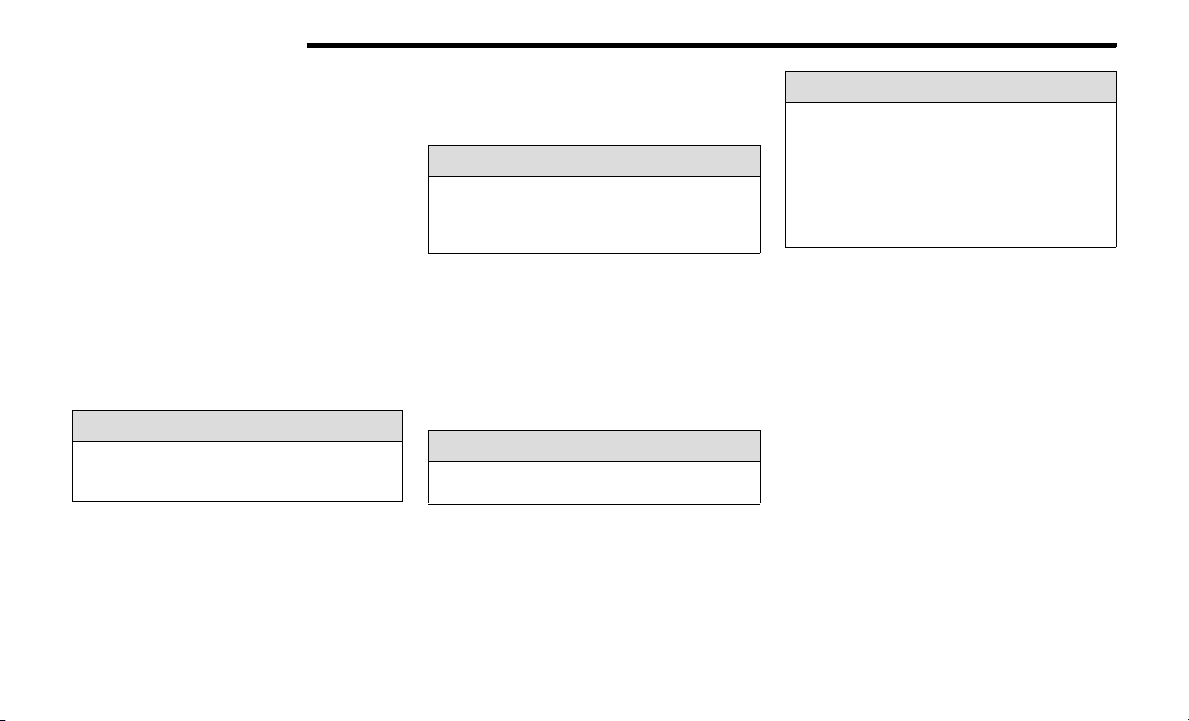Loading ...
Loading ...
Loading ...

212 STARTING AND OPERATING
DRIVING UP HILL
Once you have determined your ability to proceed and
have shifted into the appropriate gear, line your vehicle up
for the straightest possible run. Accelerate with an easy
constant throttle and apply more power as you start up the
hill. Do not race forward into a steep grade; the abrupt
change of grade could cause you to lose control. If the
front end begins to bounce, ease off the throttle slightly to
bring all four tires back on the ground. As you approach
the crest of the hill, ease off the throttle and slowly
proceed over the top. If the wheels start to slip as you
approach the crest of a hill, ease off the accelerator and
maintain headway by turning the steering wheel no more
than a 1/4 turn quickly back and forth. This will provide a
fresh "bite" into the surface and will usually provide
enough traction to complete the climb. If you do not make
it to the top, place the vehicle in REVERSE and back
straight down the grade using engine resistance along
with the vehicle brakes.
DRIVING DOWNHILL
Before driving down a steep hill, you need to determine if
it is too steep for a safe descent. What is the surface
traction? Is the grade too steep to maintain a slow,
controlled descent? Are there obstacles? Is it a straight
descent? Is there plenty of distance at the base of the hill
to regain control if the vehicle descends to fast? If you feel
confident in your ability to proceed, then make sure you
are in 4L (Low) and proceed with caution. Allow engine
braking to control the descent and apply your brakes, if
necessary, but do not allow the tires to lock.
DRIVING ACROSS AN INCLINE
If at all possible, avoid driving across an incline. If it is
necessary, know your vehicle's abilities. Driving across an
incline places more weight on the downhill wheels, which
increases the possibilities of a downhill slide or rollover.
Make sure the surface has good traction with firm and
stable soils. If possible, transverse the incline at an angle
heading slightly up or down.
IF YOU STALL OR BEGIN TO LOSE HEADWAY
If you stall or begin to lose headway while climbing a steep
hill, allow your vehicle to come to a stop and immediately
apply the brake. Restart the engine and shift into
REVERSE. Back slowly down the hill allowing engine
braking to control the descent and apply your brakes, if
necessary, but do not allow the tires to lock.
Driving Through Water
Extreme care should be taken crossing any type of water.
Water crossings should be avoided, if possible, and only
be attempted when necessary in a safe, responsible
manner. Only drive through areas which are designated
and approved. Tread lightly and avoid damage to the
environment. Know your vehicle's abilities and be able to
recover it if something goes wrong. Never stop or shut a
vehicle off when crossing deep water unless you ingested
water into the engine air intake. If the engine stalls, do not
attempt to restart it. Determine if it has ingested water
first. The key to any crossing is low and slow. Shift into first
gear (manual transmission), or DRIVE (automatic
transmission), with the transfer case in the 4L (Low)
position and proceed very slowly with a constant slow
speed of {3 to 5 mph (5 to 8 km/h) maximum} and light
throttle. Keep the vehicle moving; do not try to accelerate
through the crossing. After crossing any water higher than
the bottom of the axle differentials, inspect all of the
vehicle fluids for signs of water ingestion.
WARNING!
Never attempt to climb a hill at an angle or turn around
on a steep grade. Driving across an incline increases
the risk of a rollover, which may result in severe injury.
WARNING!
Do not descend a steep grade in NEUTRAL. Use vehicle
brakes in conjunction with engine braking. Descending
a grade too fast could cause you to lose control and be
seriously injured or killed.
WARNING!
Driving across an incline increases the risk of a rollover,
which may result in severe injury.
WARNING!
If the engine stalls or you lose headway or cannot make
it to the top of a steep hill or grade, never attempt to
turn around. To do so may result in tipping and rolling
the vehicle, which may result in severe injury. Always
back carefully straight down a hill in REVERSE. Never
back down a hill in NEUTRAL using only the vehicle
brakes. Never drive diagonally across a hill, always drive
straight up or down.
20_JL_OM_EN_USC_t.book Page 212
Loading ...
Loading ...
Loading ...